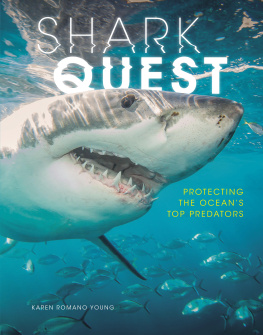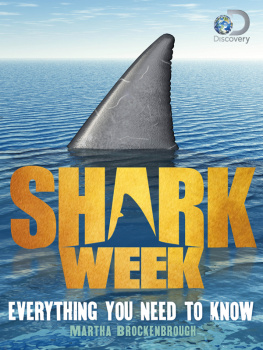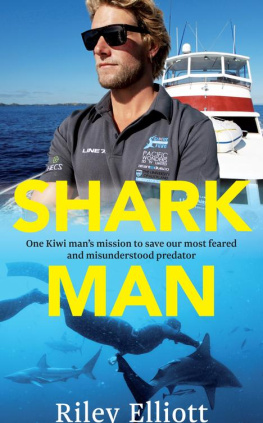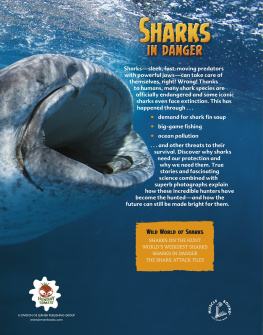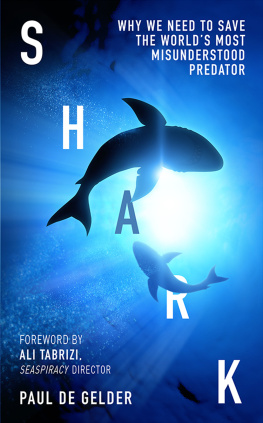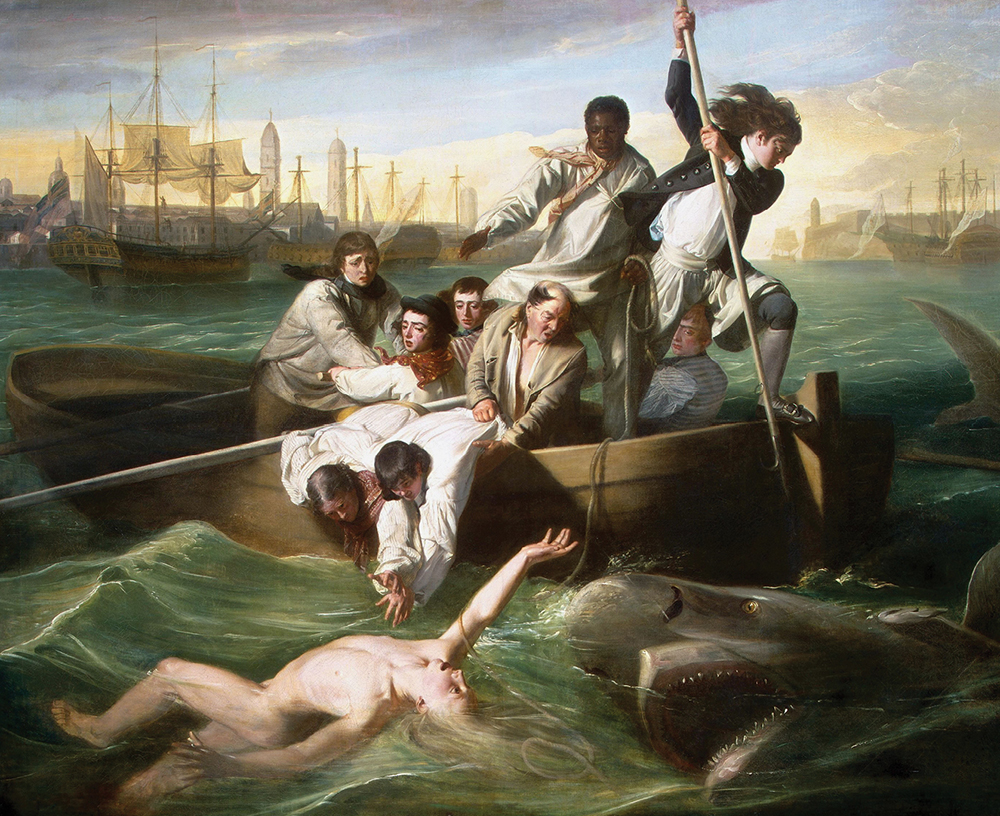For Elliott and Liam
Text copyright 2019 by Karen Romano Young
All rights reserved. International copyright secured. No part of this book may be reproduced, stored in a retrieval system, or transmitted in any form or by any meanselectronic, mechanical, photocopying, recording, or otherwisewithout the prior written permission of Lerner Publishing Group, Inc., except for the inclusion of brief quotations in an acknowledged review .
Twenty-First Century Books
A division of Lerner Publishing Group, Inc.
241 First Avenue North
Minneapolis, MN 55401 USA
For reading levels and more information, look up this title at www.lernerbooks.com .
Main body text set in Adobe Garamond Pro 11/15.
Typeface provided by Adobe Systems.
Library of Congress Cataloging-in-Publication Data
Names: Young, Karen Romano, author.
Title: Shark ques t : protecting the oceans top predators / Karen Romano Young.
Description: Minneapoli s : Twenty-First Century Books, [2018 ] | Audience: Ages 1318 . | Audience: Grades 9 to 12 . | Includes bibliographical references and index.
Identifiers: LCCN 2017044282 (print ) | LCCN 2017048881 (ebook ) | ISBN 781541524811 (eb pdf ) | ISBN 781512498059 (l b : alk. paper)
Subjects: LCSH: SharksConservationJuvenile literature . | SharksBehaviorJuvenile literature.
Classification: LCC QL638.9 (ebook ) | LCC QL638.9 .Y55 2018 (print ) | DDC 597.3dc23
LC record available at https://lccn.loc.gov/2017044282
Manufactured in the United States of America
1-43545-33330-2/9/2018
9781541538283 ePub
9781541538290 ePub
9781541538306 mobi
Contents
The Trouble with Sharks
Whats a Shark ?
Feeding the Beast
Shark Sex
Swimming with Sharks
What Do Shark Researchers Do at Sea ?
What Do Shark Researchers Do Onshore ?
Citizen Science for the Sharks
The Trouble with Sharks
The release of [the 1975 movie] Jaws contributed to people wanting to exterminate sharks. Sharks have much more cause to fear humans. Today sharks are decreasing in all oceans because of human activity.
Alessandro De Maddalena, shark expert, in Sharks of New England , 2010
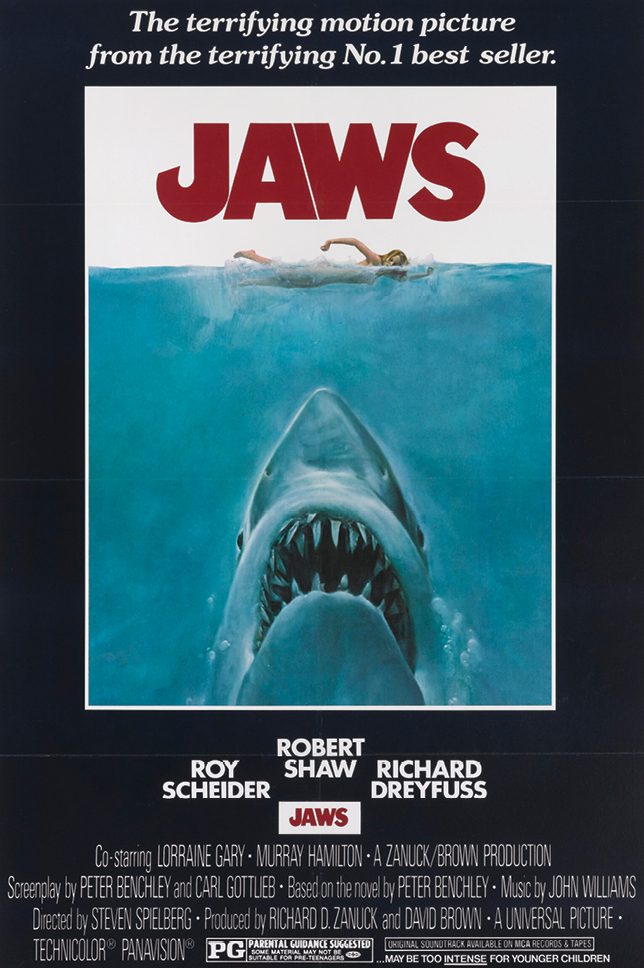
The 1975 film Jaws is one of the most famous American thrillers of all time. Directed by Steven Spielberg, it won three Academy Awards. In 2001 the film was selected for preservation in the United States National Film Registry. All the same, many critics say the movie has created negative and unrealistic stereotypes of shark behavior that persist into the twenty-first century.
P eter Benchley was a lifelong swimmer and diver, well known as the author of the best-selling book Jaws , published in 1974. The novel was inspired by a newspaper story describing a massive 4,550-pound (2,064 kg) great white shark caught off Long Island, New York. Set in a beach community, Jaws features fictional characters: a gigantic, vicious shark; a marine biologist; and a local sheriff seeking to stop the sharks human-killing spree. When the movie adaptation of Jaws was released the next year, it unleashed nightmares from the dungeons of the human mind all over the world. People are, and always have been, both intrigued and terrified by sharks, said Benchley, who died in 2006. Sharks come from one part of the dark castle where our nightmares livethe deep water beyond our sight and understanding. So they stimulate our fears and our fantasies.
Two hundred years earlier, in 1778, the East London Advertiser featured the eyewitness account of a vicious tiger shark attack on Brook Watson, a fourteen-year-old sailor swimming in the harbor at Havana, Cuba. In the first attack, the boy lost the flesh of his right leg from the calf down. In the second attack, the rogue shark bit off Brooks foot. His shipmates were near him in a skiff (small boat). They used a boat hook to drive away the shark, which tried to attack the boy a third time. A surgeon saved his life, amputating the leg below the knee, and he lived the rest of his life with a wooden leg.
Case closed? Brook Watson did not exactly fade away into history. That year the account inspired artist John Singleton Copley of Boston, Massachusetts, to paint several versions of the shark attack. Three of them hang in major US art museums, including the National Gallery in Washington, DC, the Metropolitan Museum of Art in New York City, and the Museum of Fine Art in Boston. The painting contributed to centuries of fear of sharks. It shows Brook, floundering belly-up, eyes rolled back in his head, before a horrifying shark so large it dwarfs his boat.
American artist John Singleton Copley (17381815) painted Watson and the Shark in 1778. With its realistic depiction of a grisly shark attack, the painting was a sensation. Copley became very wealthy selling engravings based on the work.
Summer Fiercer Than Others
Skip forward to the beginning of the twentieth century, when many Americans had more leisure time than in previous centuries. They began to take shore vacations in greater numbers than ever. A few shark bites on the New Jersey shore of the Atlantic Ocean got major press attention and caused a panic. During World War II (19391945), an enemy German U-boat sank the USS Indianapolis . Newspaper headlines about sharks hunting down survivors gripped the nation. In the early twenty-first century, Time magazine used a series of summer shark attacks in 2001 to lure readers. The magazines Summer of the Shark coverage ensured readership during a season with few hard-news events. The magazine focused on rare but frightening shark attacks. For example, on July 6, 2001, at dusk, a 7-foot (2.1 m) bull shark attacked eight-year-old Jesse Arbogast in shallow water off the coast of Pensacola, Florida. The boys uncle wrestled the shark to shore and, with the help of a park ranger, retrieved the boys severed arm from the sharks mouth. The boy was rushed to a nearby hospital where surgeons reattached his arm. He survived.
Then, in September, on Labor Day weekend that year, a sandbar shark bit a ten-year-old boy on the leg while he was surfing off Virginia Beach, Virginia. The same weekend, another shark (likely a bull or tiger shark) attacked a young man and woman while they were wading in the ocean off Avon, North Carolina. Both later died.
And yet, even though the attacks in 2001 were horrifying, the number of shark attacks worldwide was actually down to seventy-six, eleven fewer than the eighty-five attacks the previous year. Globally, five people died from shark bites in 2001, while twelve had died the year before.
Shark Truth
Humans fear sharks as scary predators. Yet in the shark world, humans are the scary predators. Sharks have no other predator. Rarely will orca (killer whales), sperm whales, large bony fish such as groupers, and other sharks go after sharks.
A Change of Heartand History
Peter Benchley, who made the shark-scare films Jaws , Beast , and The Deep along with documentaries about sharks, said Americans in the twentieth century perceived shark attacks to be occurring more frequently. However, the real explanation was that more people were living near the shore and swimming in the water. So their exposure to sharks and the risk of encounters were increasing. Improved communications also helped spread storiesand panic. Shark attacks leveled off in the 1990s to sixty to eighty attacks a year worldwide. A scuba diver and snorkeler, Benchley swam with sharks of all species all over the world. He was threatened, bumped, and shoved but never attacked or bitten. I couldnt possibly write the same story today, Benchley said in his 2002 book Shark Life . I know now that the mythic monster I created [the shark in Jaws ] was largely a fiction. The genuine animal is just asif not even morefascinating.

